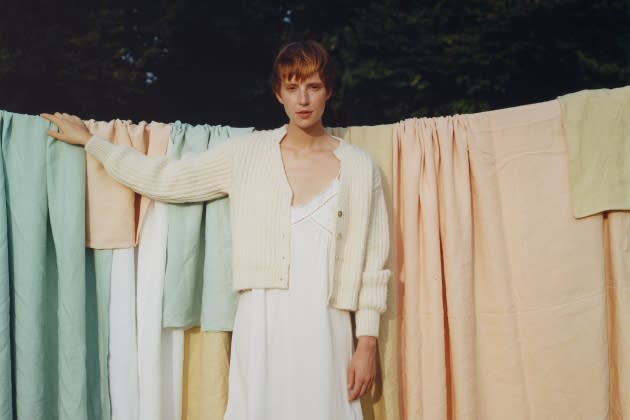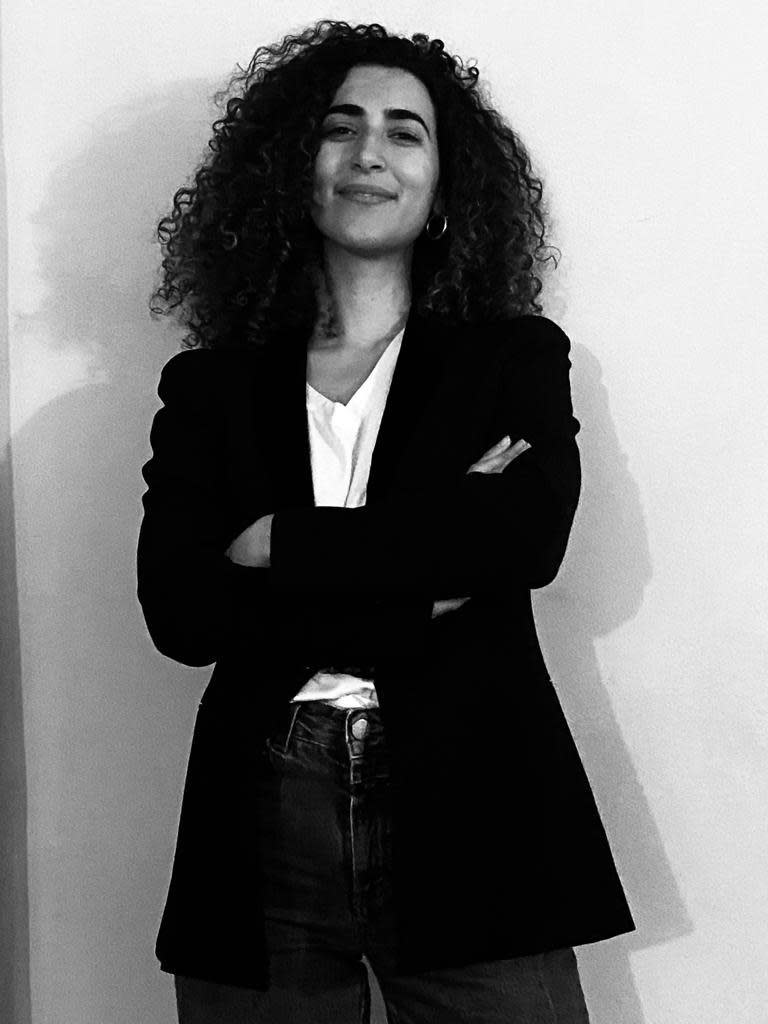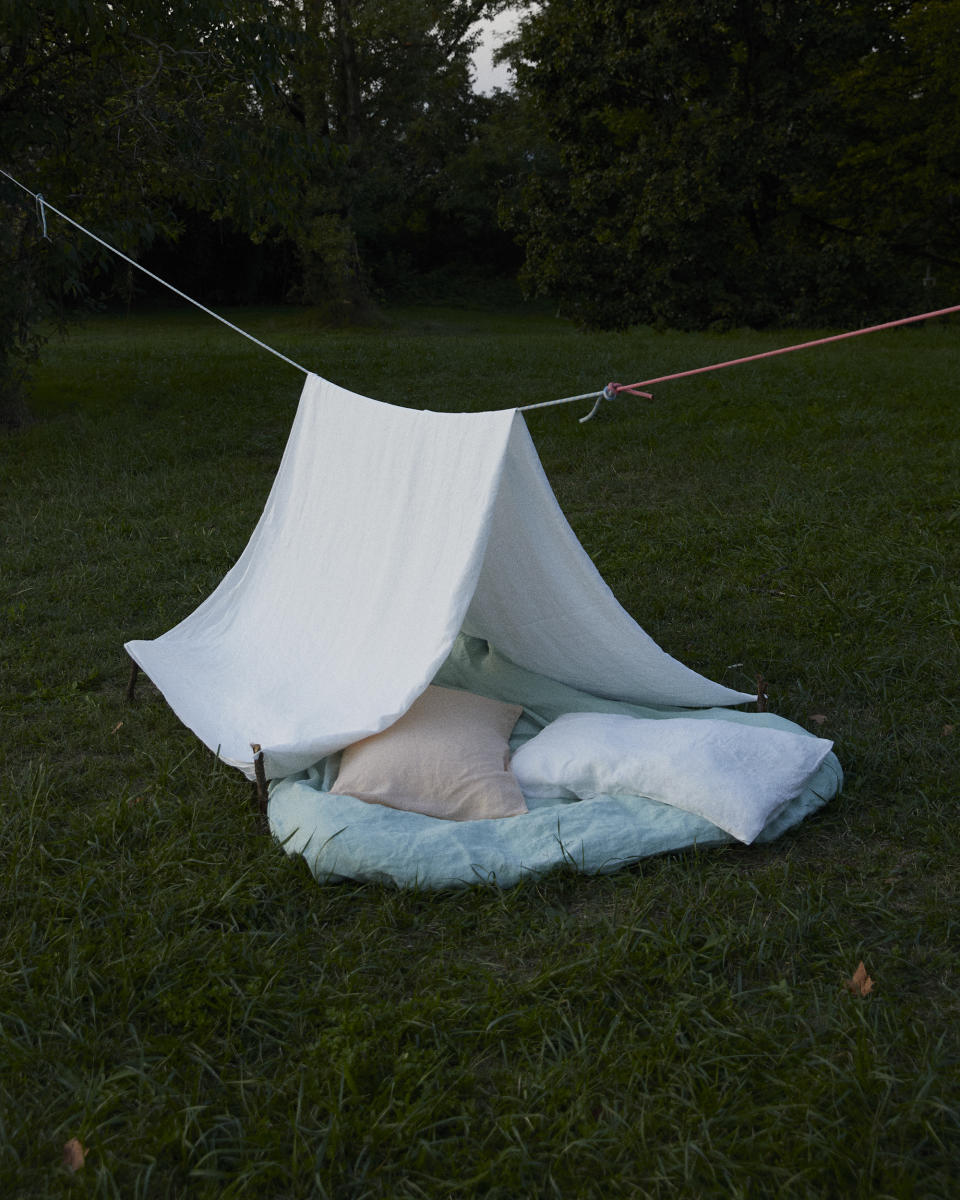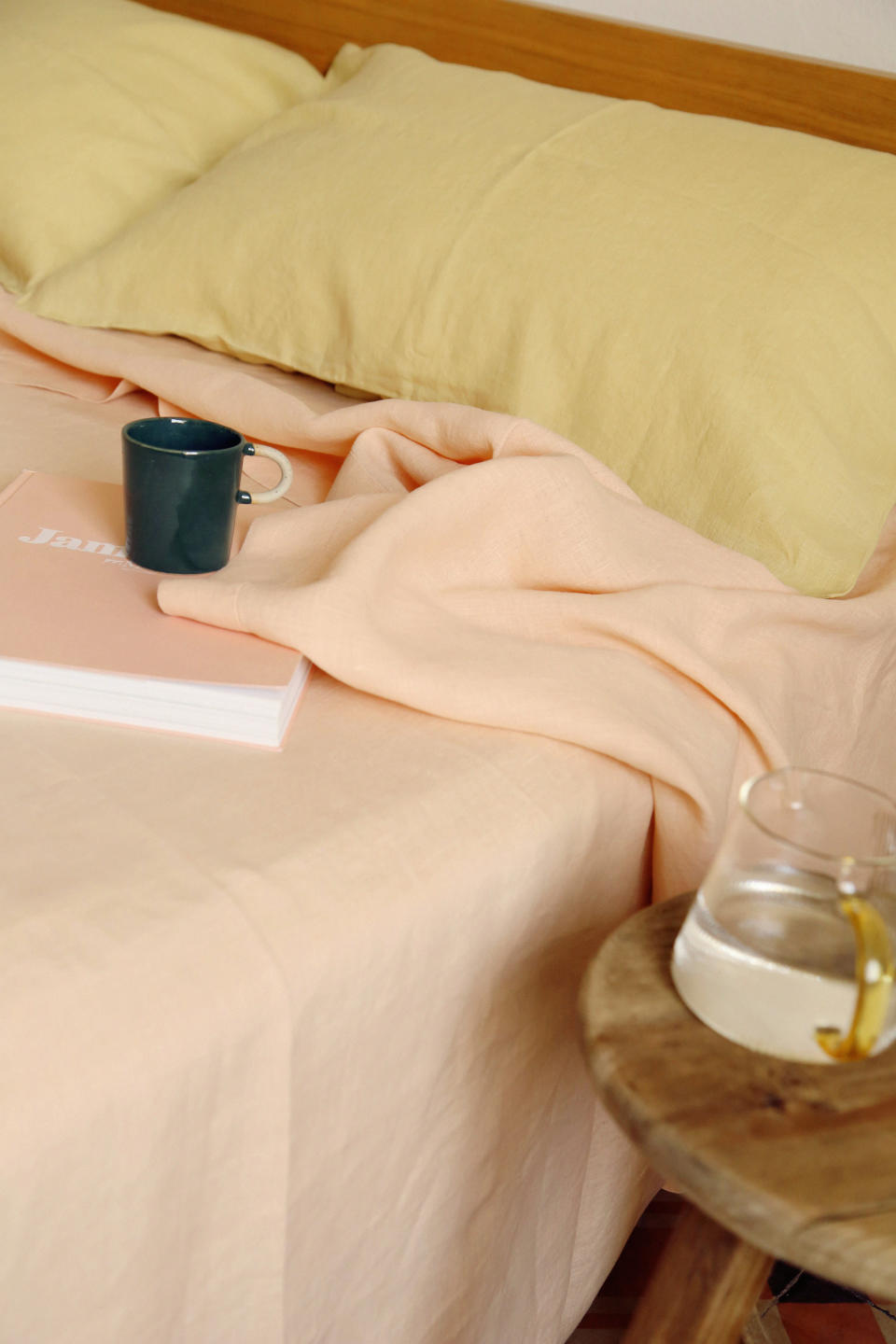Casa Parini Is Elevating Hemp With Luxury Bedding

MILAN — You can rub its oils on aches and pains, fuel a vehicle with it, smoke its leaves, and now you can even wrap your body in luxuriantly fresh fabrics made from its fibers. As consumers reconsider the sustainable qualities of cotton, fibers from the stalks of the cannabis sativa plant had been providing a viable alternate option, even reaching into the realm of luxurious.
On a little side street called Via Parini in Turin, the former Italian capital, women of a variety of races and creeds are sewing hemp sheets through their work with Color Vivi, a social enterprise that affords women a new lease on life. Their finished products are destined for an upscale, niche brand called Casa Parini. The company was founded by Viola Stancati, a writer and voice on sustainable fashion whose grandfather worked at the same address as a textile-maker 60 years ago.
More from WWD
Raised in Rome, Stancati has written for the likes of vanguard magazines like Harper’s Bazaar Italia, bringing to the fore ethical and sustainable solutions. She had an epiphany one day when, realizing there was a gap in the bedding industry, as major players like Zara Home and Ikea mostly use cotton and linen. “Even organic cotton has serious issues especially with regards to water consumption,” she said. “Hemp, however, needs minimal water, about a third that of organic cotton.”
According to WWF, cotton production is associated with runoff of pesticides, fertilizers and minerals from cotton fields that can contaminate rivers, lakes, wetlands and underground aquifers. These pollutants affect biodiversity directly by immediate toxicity or indirectly through long-term accumulation.
It takes 10,000 liters of water to produce one kilogram of cotton. Global cotton production requires more than 250 billion tons of water annually, according to environmental awareness platform The World Counts.
Cozy and soft like cotton in some cases, hemp fabrics are replacing cotton as a sustainable alternative for bedding and home across the board. From Crate & Barrel to the boho chic brands of Europe, the home and decor industry is banking on its ecologically low-impact and commercial appeal. In Italy, where sheets are traditionally hung dry and ironed, hemp fabrics have a refined quality that gets better over time, Stancati explained.
The 33-year-old said her sales have doubled in the last year and it’s time to expand production. Casa Parini sheets are currently sold on upscale platforms like Artemest, where a duvet cover retails for 250 euros, for now.
“Aside from the work we do with Colori Vivi, we have recently decided to move part of our production [to] Tuscany, in a small female-run sartorial lab near Prato that has been producing bedding for over 30 years. This allows us to satisfy our production needs without putting too much strain and on the women of the social enterprise,” she said.
Casa Parini has in fact chosen to use only natural hemp, from cannabis plants grown without pesticides, considered one of the most ecological in the world, not to mention beneficial for sleep because it’s breathable and thermoregulatory.

Co-branding within the home and decor sector is key, and co-branding is ever more present, Stancati explained. “Fashion brands and departments stores are looking to small brands like ours to diversify their offering and be aligned with more ‘sustainable’ values.” Case in point, Casa Parini created the A Notte, a CBD pillow spray in collaboration with Adesso Beauty, in order to complement its sheets for the perfect night’s sleep.
Casa Parini has also teamed up with Italian ready-to-wear label Erika Cavallini for bedding sets to be sold on the brand’s website in the near term.

Italian interior designers are also embracing hemp as a high-end fabric that exudes a sense of calm throughout the home, explained Marialaura Rossiello Irvine of Studio Irvine in Milan. The architectural designer added that she recently experimented with hemp, mixing it with natural clay and then put the mixture on a wall to create a three-dimensional material effect.
“For the bedroom, for example, a headboard can be replaced with this material, applied onto a boiserie or directly on the wall. [Hemp] is the perfect color and perfect material for the bedroom, which is intended for rest,” Irvine said.
Architect and designer Giuseppe Porcelli reflected that attitudes and focus on wellness are also elevating hemp as a luxury fabric. “We live in a time where there is an extreme focus on natural materials in general, and in particular on the fabrics we wear and the materials we choose to upholster the furniture on which we sit or sleep,” he said.
According to The Sustainable Angle, which hosts the Future Fabrics Expo, the future for luxury conglomerates could possibly be hemp, the organization told WWD last year, noting a high content of hemp together with cotton immediately brings down the environmental impact. The organization, which partnered with LVMH Moët Hennessy Louis Vuitton to support the focus on biodiversity last year, added that the plant doesn’t need to be irrigated, and it grows in temperate climates which makes it beneficial to those who live close to the Northern Hemisphere and where there is a higher consumption of textiles due to the weather.
When asked how hemp has shed its reputation for “earthy crunchy” it earned in the ’90s to its luxury status of today, Stancati said that limited demand is the main factor.
“A bit how cashmere once was. They made less of it so it was more expansive, now that the production has expanded the ‘luxury’ of it is decreasing in a way,” she explained.
Porcelli, whose work on elegant spaces is distinguished by his generous use and flair for fabrics, agreed. “There is nothing but talk about quiet luxury. I believe that a material like hemp, especially considering its neutral tones and the raw textures, can find a place in the world of luxury. Many brands, both fashion and furniture, have built their storytelling around these natural materials indeed.”

Best of WWD

 Yahoo Movies
Yahoo Movies 
